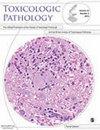长尾猕猴(Macaca fascularis)的地理来源与药物安全性评估有关吗?:文献综述及建议结论
IF 1.8
4区 医学
Q3 PATHOLOGY
引用次数: 2
摘要
长尾猕猴是生物药品非临床安全性试验的主要非人灵长类动物。本种包括9个亚种,其中束状猕猴(Macaca fascicularis fascicularis)自然分布于东南亚。自17世纪以来,m.f. fascicularis也出现在毛里求斯。食蟹猕猴在中国并不是天然存在的,但在全国各地的许多农场都有养殖。目前动物供应的短缺提出了这样一个问题:动物的地理来源是否重要,来自不同地理区域的动物是否可以在一个药物开发项目甚至一个单一的实验中结合使用。本文回顾了与非临床药物安全测试相关的选定终点的地理动物起源。来自亚洲大陆不同国家的动物似乎没有任何有意义的差异。关于亚洲岛屿动物的数据很少。毛里求斯动物在一些临床和解剖病理参数上与亚洲动物表现出一致的差异。在发育参数方面,毛里求斯和亚洲的动物具有可比性,但毛里求斯的动物成熟得更快。作者认为,只要有基线和参考数据,就可以解释地理集群之间的差异。本文章由计算机程序翻译,如有差异,请以英文原文为准。
Does Geographical Origin of Long-Tailed Macaques (Macaca fascicularis) Matter in Drug Safety Assessment?: A Literature Review and Proposed Conclusion
Long-tailed macaques are the predominant nonhuman primate species for the nonclinical safety testing of biopharmaceuticals. This species comprises 9 subspecies with Macaca fascicularis fascicularis naturally occurring in Southeast Asia. Since the 17th century, M. f. fascicularis also occurs on Mauritius. Cynomolgus macaques do not naturally occur in China, but are bred in many farms across the country. The current shortage in animal supply raises the question whether geographical animal origin matters and if animals from different geographical regions can be combined on a drug development program or even a single experiment. This article reviews geographical animal origin in relation to selected endpoints that are relevant in nonclinical drug safety testing. Animals from different countries within Asia mainland do not appear to show any meaningful difference. Very little data are available for animals from Asia island. Mauritian animals show consistent differences from Asian animals in several clinical and anatomical pathology parameters. For developmental parameters, animals from Mauritius and Asia are comparable with the exception that Mauritian animals mature faster. In the authors’ view, differences between the geographical clusters can be accounted for as long as baseline and reference data are available.
求助全文
通过发布文献求助,成功后即可免费获取论文全文。
去求助
来源期刊

Toxicologic Pathology
医学-病理学
CiteScore
4.70
自引率
20.00%
发文量
57
审稿时长
6-12 weeks
期刊介绍:
Toxicologic Pathology is dedicated to the promotion of human, animal, and environmental health through the dissemination of knowledge, techniques, and guidelines to enhance the understanding and practice of toxicologic pathology. Toxicologic Pathology, the official journal of the Society of Toxicologic Pathology, will publish Original Research Articles, Symposium Articles, Review Articles, Meeting Reports, New Techniques, and Position Papers that are relevant to toxicologic pathology.
 求助内容:
求助内容: 应助结果提醒方式:
应助结果提醒方式:


